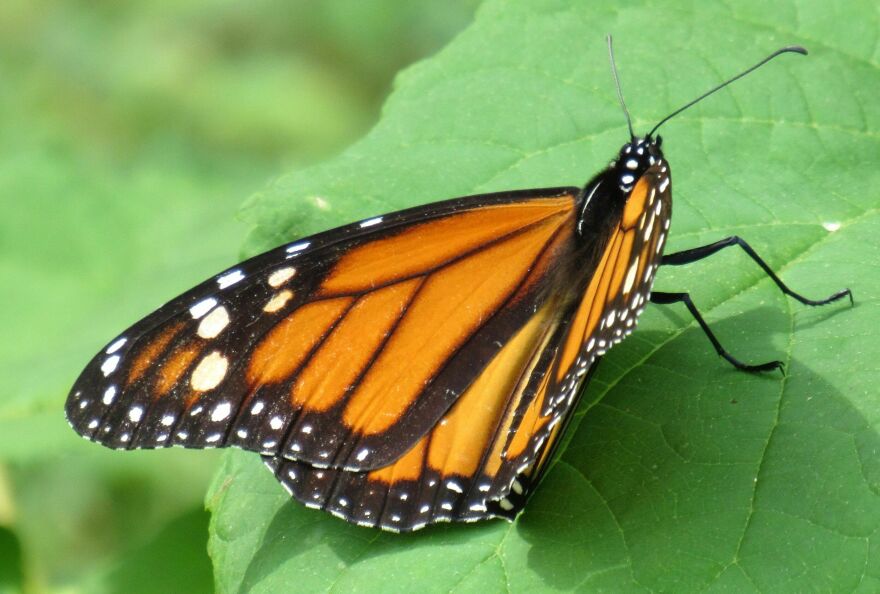Every year, thousands of butterflies migrate from New England to the warmer airs of central Mexico, some 3,000 miles away.
Scientists across the country are studying their migration patterns through a project funded by the federal government. This is the second full year that the New Hampshire Audubon Center is participating in a monarch tracking program.
Diane De Luca, who works at the center, said the program observes the flights of butterflies as they flutter across the country, giving scientists like her a chance to see not just the scope of their journey but the food and rest stops they make along the way.
Researchers do this by attaching small, lightweight tracking devices to nearly 50 strong and healthy butterflies. Towers can then ping their location when the small creatures are nearby.
“The thought behind tagging monarchs here in the Northeast is to get a better sense of what they actually do when they're first starting their migration,” De Luca said.
Scientists like De Luca first have to pick out which butterflies they think will not be encumbered by the tracking devices. De Luca said while the devices have been refined to be lightweight, she still seeks out strong, younger butterflies — sometimes looking for vibrant wings that aren’t tattered. They’ll also check their weight.
“We do judge the next morning whether or not they seem to have acclimated to the tag and then we'll release them the next day,” De Luca said.
Volunteers can be trained to assist staff like De Luca who do the tagging by helping net and write down information collected by butterflies they’ll tag.
By observing where butterflies nectar, or gather food, scientists can study whether they themselves have an impact on monarch butterfly conservation.
“What are the areas they're nectaring in? Do they spend time nectaring for a number of days? Do they move immediately?” De Luca said. “We're just trying to learn more about monarch conservation and whether or not we can have an impact on that.”
De Luca said last year a butterfly they tagged traveled to Massachusetts and stopped at Lynnfield Marsh, one of the state’s largest freshwater marshes. De Luca said purple loosestrife, a type of flower considered an invasive species, is abundant at the marsh and it’s attractive to monarch butterflies, who feed off of it.
De Luca said she was surprised how one butterfly traveled quite a long distance in one day.
“We never expected that we would pick up monarchs within a day, 60 miles away from here. That's a pretty significant travel for a small butterfly,” De Luca said.
This year has posed a few challenges, mainly the weather. De Luca said the summer’s excess rain hasn’t given them the right conditions to catch butterflies.
“We're always looking for two good days to tag,” De Luca said. “We want a good day to actually net and collect and tag them and when we want a good day to release them as well. Crossing fingers that's true for this year, too.”
The monarchs have a short take off period during September when they begin their migrations though De Luca says a window might be coming soon.







